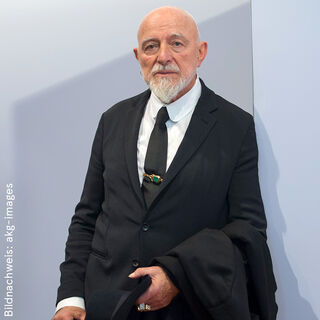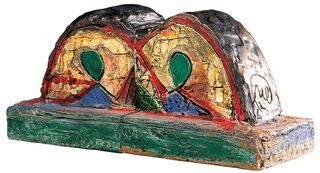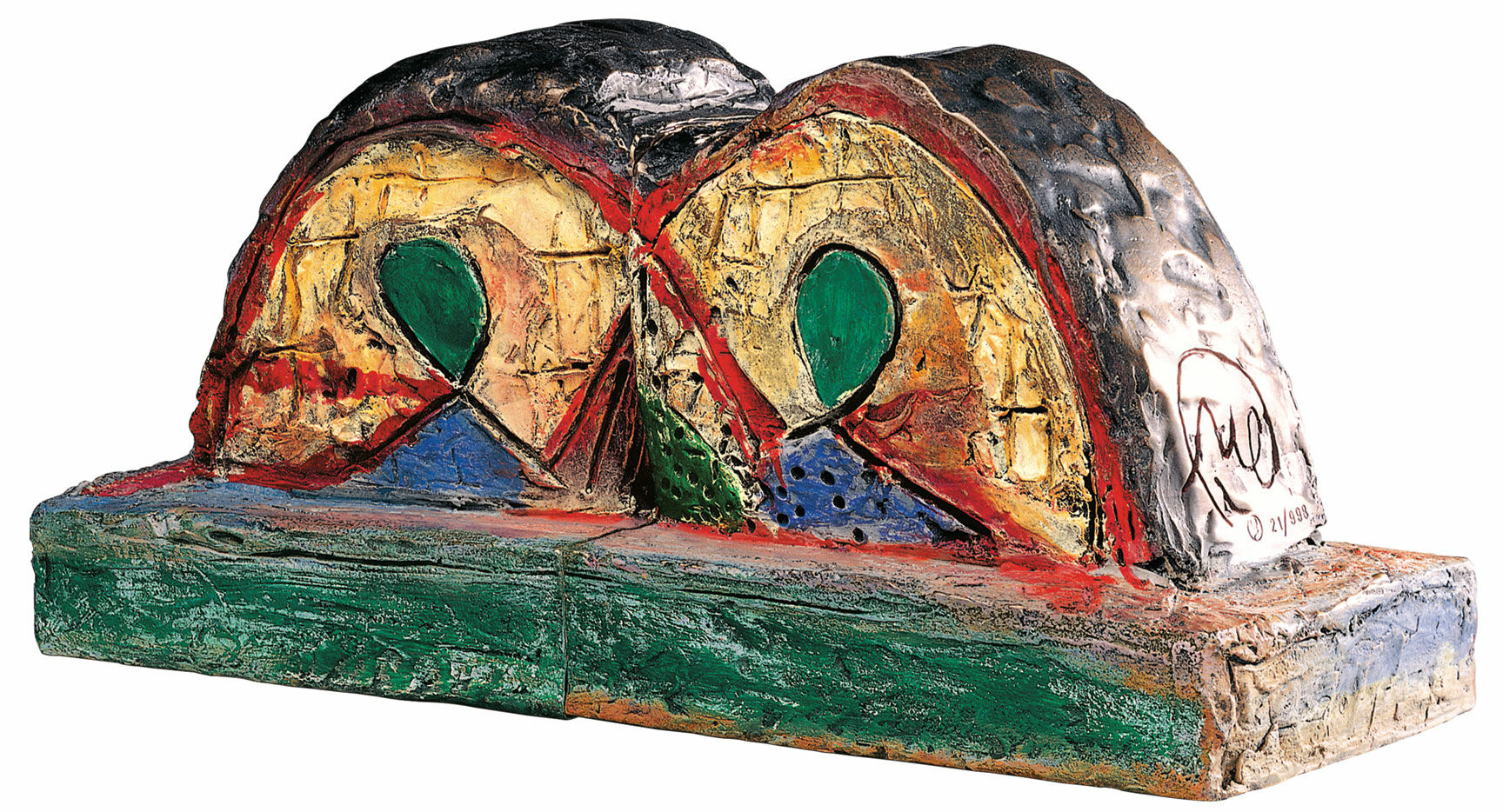Sculpture "Dithyrambe" (1993), bronze
Sculpture "Dithyrambe" (1993), bronze
Quick info
limited, 998 copies | numbered | signed | bronze | handmade | patinated | hand-painted | polished | size altogether 35 x 16 x 14 cm | weight 12.3 kg
Detailed description
Sculpture "Dithyrambe" (1993), bronze
The "cultic hymn to honour Dionysus" is the meaning of the name of this work and a recurring motif in the artist's oeuvre.
Two-part sculpture in fine bronze, cast by hand in the Lost-Mould-Process. Limited edition, 998 Arabic numbered copies. Patinated by hand and painted according to the artist's specifications. The cut surfaces are polished and bear the artist's signature. Undersides covered with felt. Size of the entire sculpture 35 x 16 x 14 cm, weight 12.3 kg.

About Markus Lüpertz
For over 50 years, the painter, graphic artist and sculptor Markus Lüpertz has left his mark on contemporary German art like no other and is today one of its best-known and most influential representatives. Since the beginning of his career, at the end of the 1960s, he fascinated and polarised with his expressive paintings and sculptures, but also with extroverted public appearances.
Lüpertz, born in 1941, created an extremely extensive and cross-stylistic oeuvre, was headmaster of the Düsseldorf Art Academy for over 20 years and also achieved international renown with worldwide exhibitions.
An alloy of copper with other metals (especially with tin) used since ancient times.
When casting bronze, the artist usually applies the lost-wax technique which is dating back more than 5000 years. It's the best, but also the most complex method of producing sculptures.
First, the artist forms a model of his sculpture. It is embedded in a liquid silicone rubber mass. Once the material has solidified, the model is cut out. The liquid wax is poured into the negative mould. After cooling down, the wax cast is removed from the mould, provided with sprues and dipped into ceramic mass. The ceramic mass is hardened in a kiln, whereby the wax flows out (lost mould).
Now we finally have the negative form, into which the 1400° C hot molten bronze is poured. After the bronze had cooled down, the ceramic shell is broken off and the sculpture is revealed.
Now the sprues are removed, the surfaces are polished, patinated and numbered by the artist himself or, to his specifications, by a specialist. Thus, each casting becomes an original work.
For lower-quality bronze castings, the sand casting method is often used which, however, does not achieve the results of a more complex lost-wax technique in terms of surface characteristics and quality.
Term for an art object (sculpture, installation), which is produced in multiple copies in a limited and numbered edition according to the artist‘s will.
Artist's multiples have been called the most accessible and affordable art on the market.
A plastic work of sculptural art made of wood, stone, ivory, bronze or other metals.
While sculptures from wood, ivory or stone are made directly from the block of material, in bronze casting a working model is prepared at first. Usually, it is made of clay or other easily mouldable materials.
The prime time of sculpture after the Greek and Roman antiquity was the Renaissance. Impressionism gave a new impulse to the sculptural arts. Contemporary artists such as Jorg Immendorf, Andora, and Markus Lupertz also enriched sculptures with outstanding works.


